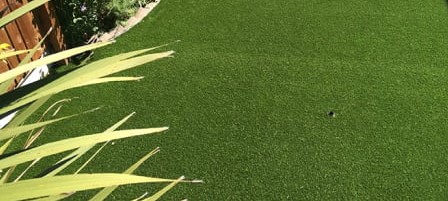As a classic image for any Australian home, the lawn is one of the most important parts of any outdoor living area and makes any guest a first impression. In addition to the visual aesthetics, the lawn serves as a great place for children and pets to play. Thanks to technological advances, we have the option of having a real lawn or a fake lawn. But what are the main differences between the two and is one better than the other?
Deciding between the best artificial turf or a natural lawn is something that many homeowners struggle with. To help you decide what’s best for you, we’ve compared the costs and benefits of each.
Artificial Turf
Synthetic grass is made up of synthetic fibres that look like natural grass and have a lifespan of up to 25 years. Some people may think that artificial turf looks very fake, but now there are various alternatives of artificial grass available.
Types of best artificial turf vary depending on the type of material, the height of the pile and the colour. Artificial turf made of three different materials include polypropylene, polyethylene and nylon. Artificial grass also comes in different sizes, called pile height, which is the height of grass blades. While most people believe that artificial grass is only available in green, there are actually a wide variety of colours available, such as pink, blue, and more.
Based on the above various characteristics what is important is how the artificial lawn area will be used. Primary uses may include a pet yard, planting greens, or a home lawn. For home lawns, medium-height artificial grass made from polyethylene is the most popular choice. There will be many shades of green and maybe some brown to mimic the look of a healthy natural lawn.
Advantages of artificial Turf
The benefits of installing best artificial turf are many. Unlike natural grasses, artificial grasses do not require much maintenance. There will be some maintenance items required for dust removal, periodic brushing / grooming and removal of large debris. With little maintenance required, the best part of artificial grass is that it does not need water. This is a huge plus in areas like Southern Australia where water is scarce and water rates are rising.
An artificial lawn will look great in any outdoor living space throughout the year, regardless of the climate or the season. Worrying about diagnosing dead grass will be a thing of the past. Artificial grass is also beneficial for the environment, as it does not require harmful pesticides, fertilizers and fungicides. Other environmental benefits include gas-powered equipment such as lawn mowers, as well as water conservation to reduce pollutants and carbon emissions.
Natural grass
Most Australian homes traditionally have natural lawn, which has allowed young entrepreneurs to mow the lawn for decades. There are a large number of different species of grasses, which vary according to the blade, growth, season, shade and water requirements. Unlike artificial grass, you have to make sure that you choose natural grass suitable for your climate.
Some popular grass species for most lawns are Twisted, Bermuda, Fine Fescue, Kentucky Bluegrass, Ryegrass and Toll Fescue. The blades for each of these species vary from narrow, flat, pointed, pointed, hairy, and round. Some species grow rapidly, low or in clusters. And since grass is natural, water intake can range from once a week to twice a week.
Natural lawn benefits
Maintaining a healthy green lawn takes time and perseverance. Maintenance requires a certain amount of watering the lawn at maximum times, which can be automated with the help of a sprinkler system. Lawns also need to be sown, aerated, fertilized and monitored for weeds and diseases. Each of these tasks is to ensure that the lawn draws in as many nutrients as possible so that it stays green and green.
Natural turf soil can be used in your outdoor living space by sowing seeds or sod to the area. Sod is a grass that is already grown by farmers and comes in rolls. Depending on how much effort you put into the lawn, sod may be the best option.
Despite any concerns about water use in relation to natural grasses, there are advantages to natural grass lawns. Since grass is natural, lawn purifiers are able to improve air quality. This is done by the breakdown of air-borne pollutants into the soil, which is captured by the grass blades. Other environmental benefits of natural lawns are oxygen production, improved soil quality, reduced flow, and cooling of the surrounding area.








